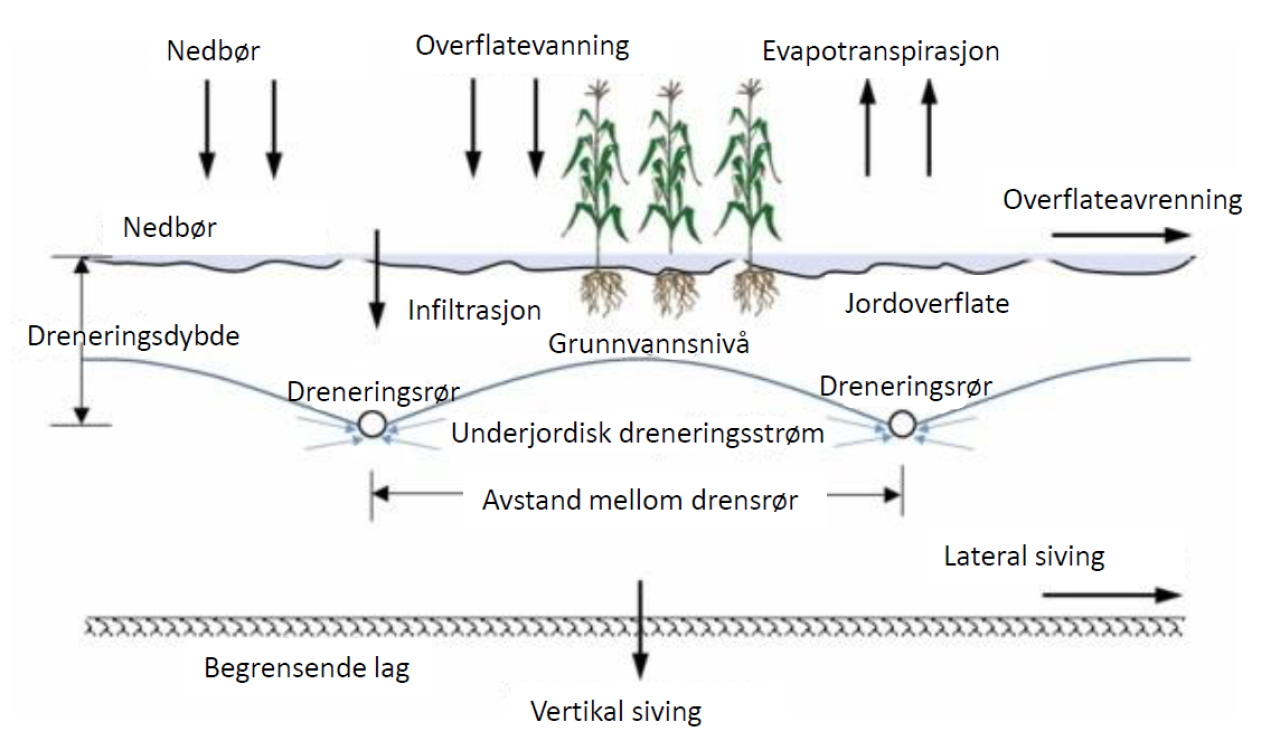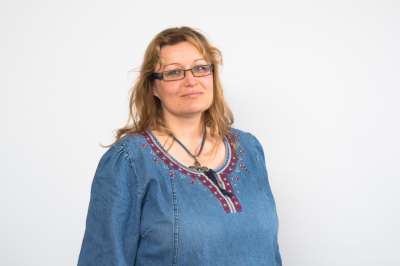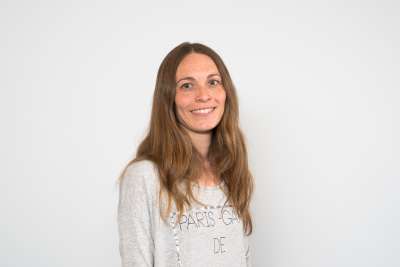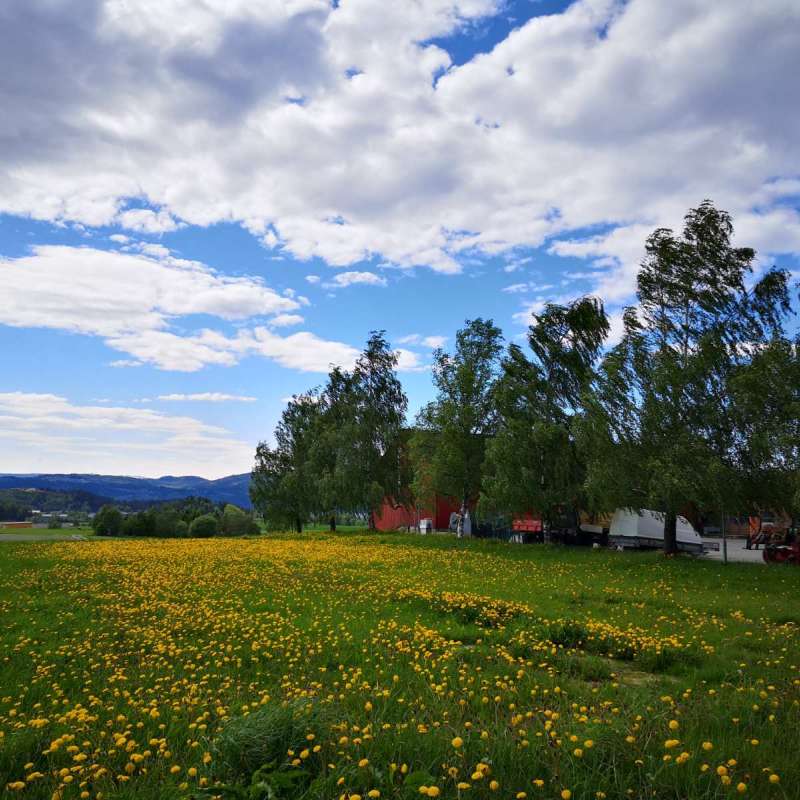DrainMod - NII

Kilde: Moursi et al, 2022
Forskningsmodellen - DRAINMOD
DRAINMOD er en databasert simuleringsmodell utviklet av Dr. Wayne Skaggs ved Institutt for Biologisk og Landbruksteknikk, North Carolina State University, Raleigh, NC i 1980. Modellen simulerer hydrologien i dårlig drenerte jordarter med høy grunnvannstand, time for time og dag for dag, over lange klimatiske tidsserier (f.eks. 50 år). Modellen forutsier effektene av drenering og tilhørende vannforvaltningstiltak på grunnvannsnivåer, jordens vannregime og avlinger.
Grunnleggende spesifikasjoner for modellen:
Navn på modellen | DrainMod-NII | ||
| Om modellen |
| ||
Formål med modellen | Dreneringssystemdesign | ||
Utviklet av | North Carolina State University, USA, 1980 | ||
Skala |
| ||
Romlig | 1D/semi 2D profil | ||
Tidsmessig | Daglig (eller timebasert) | ||
Prosessbeskrivelse |
| ||
Modelltype | Prosessbasert | Varme | Ja |
Intersepsjon | Nei | Snødynamikk | Ja, basert på temperatur |
Infiltrasjon og vannstrøm | Ja, Green-Ampt infiltrasjon | Frossen jord | Ja, både varme og vann påvirkes |
Overflateavrenning | Ja, både Hortonisk og metningsoverskudd | Plantevekst | Nei, men relative avlinger kan beregnes. Kan kobles til andre modeller (DRAINMOD-DSSAT, DRAINMOD-GRASS) |
Makroporestrøm | Nei | Nitrogentransport | Ja, til luft og vann |
Evapotranspirasjon | Ja | Fosfortransport | Nei |
Kunstig drenering | Ja | Partikkeltransport | Nei |
Perkolasjon | Ja | Plantevernmiddelransport | Nei |
Andre | - | ||
KONTAKTPERSON

Csilla Farkas
Seniorforsker
-
Divisjon for miljø og naturressurser
(+47) 948 14 727 csilla.farkas@nibio.no Kontorsted: Ås - Bygg O43

Lenker
DRAINMOD websiteKONTAKTPERSON

Csilla Farkas
Seniorforsker
-
Divisjon for miljø og naturressurser
(+47) 948 14 727 csilla.farkas@nibio.no Kontorsted: Ås - Bygg O43

Publikasjoner
Forfattere
Sigrun Hjalmarsdottir Kværnø Csilla Farkas Marianne Stenrød Ole Martin Eklo Attila Nemes Jannes Stolte Johannes Deelstra Alexander Melvold EngebretsenSammendrag
Det er ikke registrert sammendrag
Forfattere
Johannes Deelstra Csilla Farkas Alexander Engebretsen Sigrun Kværnø Stein Beldring Alicja Olszewska Lars NesheimSammendrag
Sammendrag
The Skuterud catchment is a small artificially drained agricultural catchment, located in south eastern Norway. The total area of the catchment is 4.5 km2 of which agriculture covers 2.7 km2, forest 1.3 km2 while the rest is occupied by urban area. The main agricultural crops are wheat, barley and oat. The climate is cold temperate continental or subarctic with a winter season, lasting from November -March and characterized by periods with below-zero temperatures and a varying degree of snow cover, interchanged with thaw periods combined with precipitation and runoff. In Norway, melt water, causing surface runoff, is one of the most serious reasons for erosion, in addition to near-saturated soil moisture conditions after longer periods with rainfall during the autumn. Climate change can potentially lead to an increase in the number of freeze/thaw cycles which in addition to the predicted increase in precipitation during the period after the growing season from September - April, might lead to an increase in both the amount of runoff and its intensity, with subsequent adverse effects on erosion and nutrient loss. Models are indispensable tools in the prediction of climate change effects on runoff generation. In this respect, the Drainmod model has been tested on the Skuterud catchment concerning its ability to predict runoff from an artificially drained agricultural catchment under prevailing winter conditions. The results are presented in this paper. If proven successful, the model can be used to predict the long term hydrologic impacts of climate change for the Norwegian conditions
Prosjekter

DrenKlim: Drainage systems in clay soils inTrøndelag - adaptation to changing climate
Drenering av leirjord er forventet å bli stadig mer nødvendig når klimaet endrer seg. Dagens råd om drenering baserer seg i stor grad på data fra eksisterende klima, og det er derfor behov for å benytte tilpassede modeller, slik at vi kan vurdere behovet for grøfting også i et fremtidig klima. Så langt har anvendelse av modeller på leirjord vært vanskelig og gitt utilfredsstillende resultater. Måleresultater fra Kvithamar så langt tyder på at dimensjoneringen av grøftesystemer er utfordrende og vil bli enda mer krevende under fremtidige forhold med endret nedbørmønster.

Divisjon for miljø og naturressurser
DrenKlim: Drainage systems in clay soils inTrøndelag - adaptation to changing climate
With changing hydrological conditions there is need to evaluate the functioning of drainage systems under future circumstances and to highlight possible needs to redesign them.
